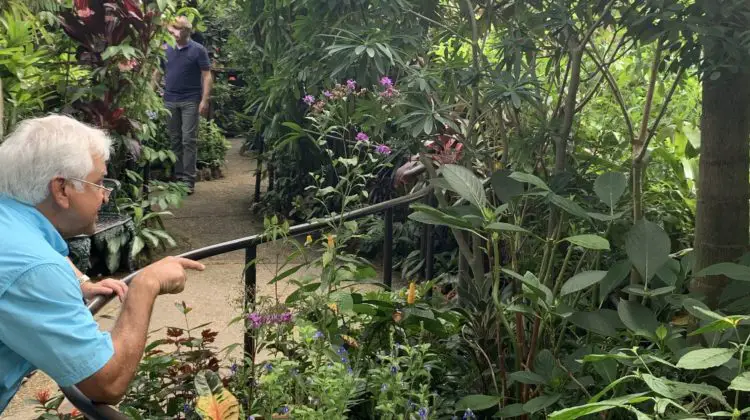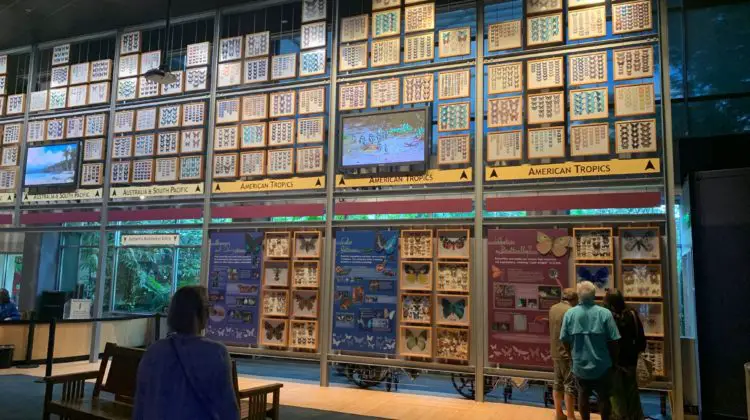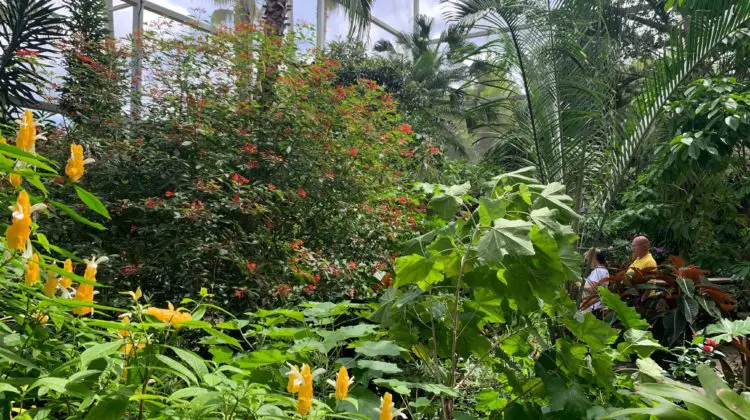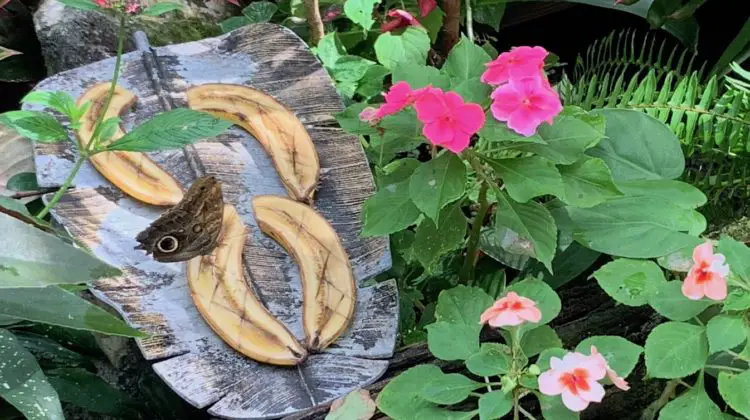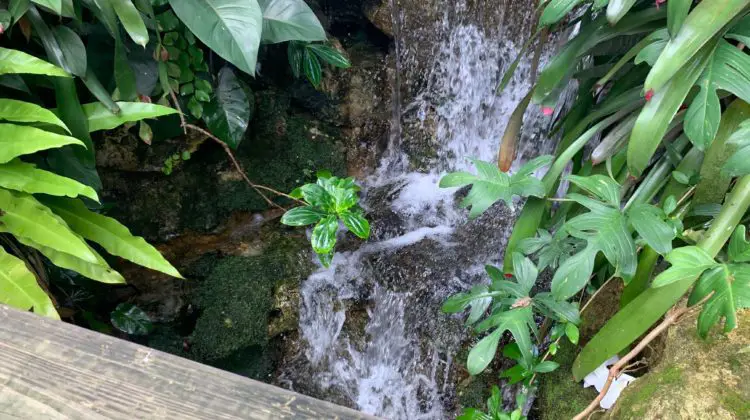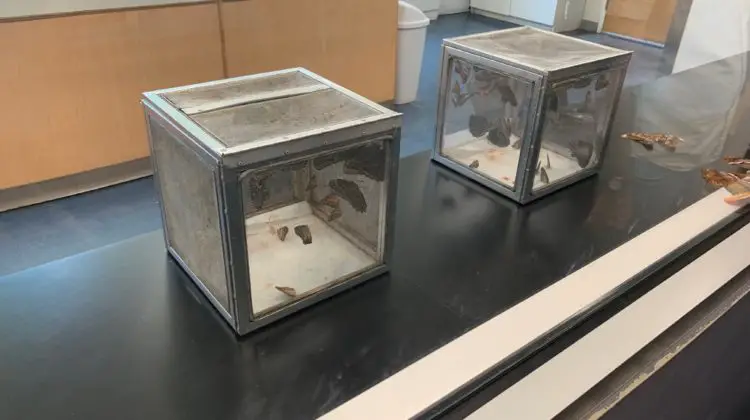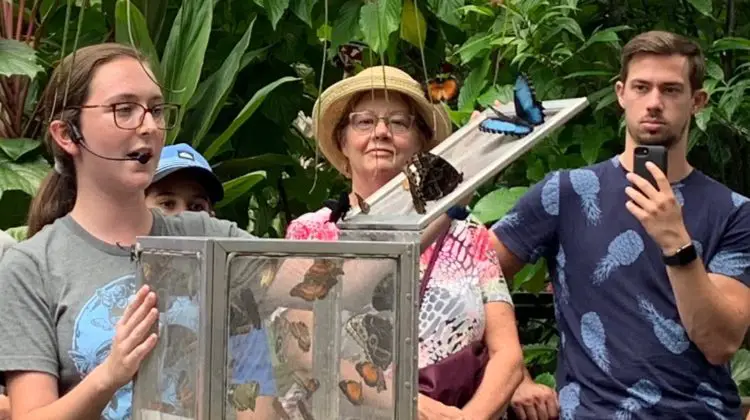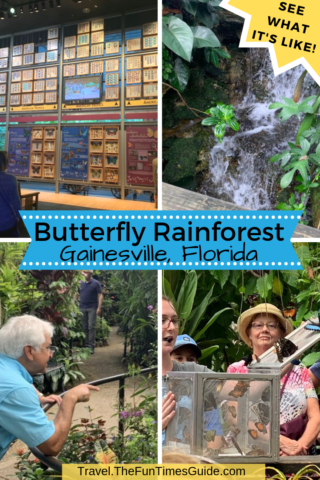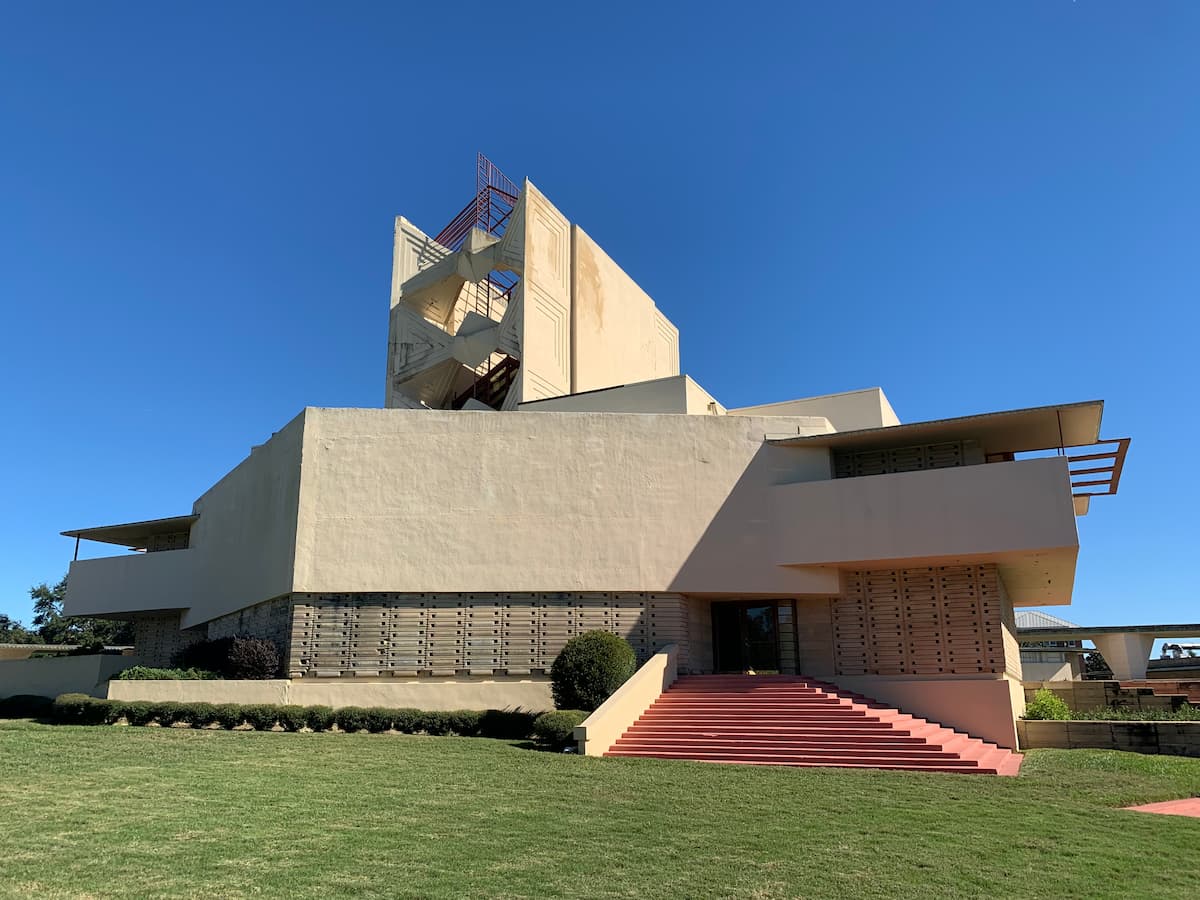Ever visited the Butterfly Rainforest in Gainesville at the Florida Museum of Natural History? If not, or even if you have a long time ago, you should check it out.
It’s a unique butterfly conservatory that brings you into an exotic world of butterflies like you’ve never seen before.
I’ve heard about the Butterfly Rainforest in Gainesville for years and have seen billboards for it up and down Florida’s highways. But only recently did I pay a visit to this popular Florida travel destination with my sister and parents.
Sis particularly loves lepidoptera (Latin for moths and butterflies) and once worked at another butterfly museum in Florida. But she and I agree — there’s no place like this butterfly conservatory in Gainesville!
What It’s Like Visiting The Butterfly Rainforest
The Butterfly Rainforest is located at the Florida Museum of Natural History at the University of Florida campus in Gainesville. The city is about 2 hours north of Tampa.
Once you’re there, you’ll pay admission to get into the museum, and then proceed back and to the right to get to the Butterfly Rainforest.
The butterfly conservatory area at the museum is huge!
Mounted Butterflies
Before entering the rainforest habitat, you find yourself in a large hall framed by many dozens of large frames. Each contains between a dozen to more than 100 mounted butterflies from all over the world.
My family and I spent nearly 30 minutes perusing all of the different frames filled with mounted butterflies of every type and color imaginable.
The only reason we didn’t stay longer is we wanted to get into the butterfly habitat during the mid morning — when the butterflies are most active.
Tropical Outdoor Habitat
We entered the 6,400-square-foot Butterfly Rainforest through a pair of double doors. (The double doors help prevent the winged creatures from flying into the rest of the museum.)
Then, we found ourselves in a tropical outdoor habitat protected by a large screen enclosure.
Moments into our journey down the winding path through this lush, humid jungle… we were greeted by a pair of exotic orange, long-winged butterflies!
A little further down the path, I spied a few fluttering brown-spotted butterflies. They were feeding on banana peels splayed upon an artistic metal leaf.
Further on down the trail, I heard water… There’s a manmade river flowing through this habitat!
The river is traversable by a series of footbridges throughout the garden.
I quickly found a waterfall… and fish in the water… turtles… and even a few small birds flitting about around a large lagoon in the middle of the rainforest.
The diversity of wildlife in the butterfly habitat is amazing!
Raising Caterpillars
Of course, butterflies take center stage here. And the wide variety of these beautiful flying creatures here is just outstanding.
There’s an average of 50 butterfly species in the Butterfly Rainforest — with about 1,000 butterflies in flight or feeding at any given time.
Butterflies live for only 2 to 5 weeks at this stage in their lives — so the museum staff must keep the population replenished on a fairly constant basis.
That’s why they raise caterpillars in the adjoining Rearing Lab through their pupa stage. (The pupa stage is the point in a butterfly’s life cycle when they transition from caterpillar to butterfly inside a chrysalis.)
As the butterflies emerge from their chrysalises, they are lovingly collected by the staff.
They’re released throughout the day inside the Butterfly Rainforest during educational presentations.
The staff were also very helpful in answering my numerous questions!
How To Make The Most Of Your Trip To The Butterfly Rainforest
Whether it’s your first time in this Florida butterfly museum or you’re a regular visitor who stops by throughout the seasons, you’re bound to find something new here every time you come!
5 Ways To Make Your Trip Memorable
I made the most of my visit by:
- Using the butterfly guide book — In the lobby with the mounted butterflies (before you enter the butterfly conservatory), you’ll find a few different illustrated leaflets. Pick one up before you venture into the habitat because these will help you identify the many different butterflies and plants found in this butterfly conservatory. (TIP: There’s also a much more complex and thorough guide for you to reference inside the habitat.)
- Taking lots of photos — I had my camera with me during my tour of the Butterfly Rainforest. I took many photos of my trip there — some of which I’ve posted in this article. (TIP: Make sure that your battery is fully charged before entering the museum.)
- Gathering ideas — I left the Butterfly Rainforest with a few souvenirs and lots of new ideas for my own butterfly garden! A couple hours in this beautiful butterfly museum gave me so much inspiration for what I want to plant in my own garden to help attract butterflies in my yard. (TIP: Be sure to take plenty of mental notes along the way!)
- Buying plants for my butterfly garden — The Florida Museum of Natural History sells butterfly plants that grow well in Central Florida and in similar climates. (TIP: I ended up buying some swamp milkweed for my butterfly garden at home. The swamp milkweed is still growing well — and it’s a living souvenir of my fun trip to the Butterfly Rainforest!)
- Following the rules — When entering and exiting the Butterfly Rainforest, be sure to let the first set of double doors close before opening the second. Don’t spit or chew gum in the Butterfly Rainforest. And don’t touch the butterflies and other wildlife or plants. (TIP: Simple rules like these ensure that the butterflies have safe, happy lives in their naturalistic habitat at the museum!)
My Tips For Visiting The Florida Museum Of Natural History In Gainesville
All in all, I’m glad I finally visited the Butterfly Rainforest. I’m just sorry I hadn’t stopped by sooner.
It’s not terribly far from where I live and it opened my eyes to the awesome world of butterflies and moths. They’re creatures I find and enjoy watching every day in my own yard.
The Butterfly Rainforest is located on the well-attended University of Florida campus. So it’s near a lot of other places in Gainesville — including many restaurants. But there really aren’t many public dining opportunities on this part of the campus. So, grab breakfast or lunch at a nearby restaurant before heading over to the museum.
The Florida Museum of Natural History is located in the University of Florida Cultural Plaza at 3215 Hull Road in Gainesville, Florida 32611-2710. Check the museum’s website for ticket information and hours of operation before your visit.
You’ll also want to see if there are any special events happening during the time that you’ll be visiting. For example, we visited when there was a crocodile exhibit that had recently opened to the public. We also heard about the museum’s upcoming Butterfly Fest — which I’m hoping to attend during the autumn.
Like this post? Save it to read again later… or share with others on Pinterest!

